Standing Stones of Britain and Europe
An article for senior couples and mature solo travellers curious to learn about Standing stones of Scotland, England, Wales, France and other parts of Europe. Support material for Odyssey's small group tours of pre-historic Britain, Scotland and the Anglo - France tour.
7 Feb 22 · 18 mins read

“These great structures were built to enhance very special places on the earth’s surface, where a force or current works to make this expansion of consciousness more intense.” (Service A & Bradbery J 1979, The Standing Stones of Europe A Guide to Megalithic Monuments, Weidenfeld & Nicholson, London)
Introduction to Standing Stones
Thousands of years ago, megaliths started to appear in Europe — standing stones, dolmens, stone circles, stone alignments.
They vary from single stones to complex structures such as Stonehenge in the Scottish Highlands or the Callanish (or Calanais in Gaelic) standing stones on the Isle of Lewis in the Outer Hebrides Scotland. The word megalith is derived from the Greek language and simply means great stone. It is commonly used for any massive stone structure that was man-made. The megalithic stones are usually set upright in the earth and date from potentially earlier than 5000 to 500 BC in western European locations. In association with the megalithic structure(s) across Europe, there are often large earthworks of various designs—ditches and banks, broad terraces, circular enclosures known as henge(s), and frequently artificial mounds as well as large boulders of masonry that are called “cyclopean”. There are about 35,000 such monuments in Europe, many along the Atlantic coast of France and Spain, in England, Ireland, Scandinavia and throughout the Mediterranean. They attract both tourists and archaeologists, who have spent a century debating how the knowledge to build such monuments spread, why they were built in the first place and what shared purpose they might serve.
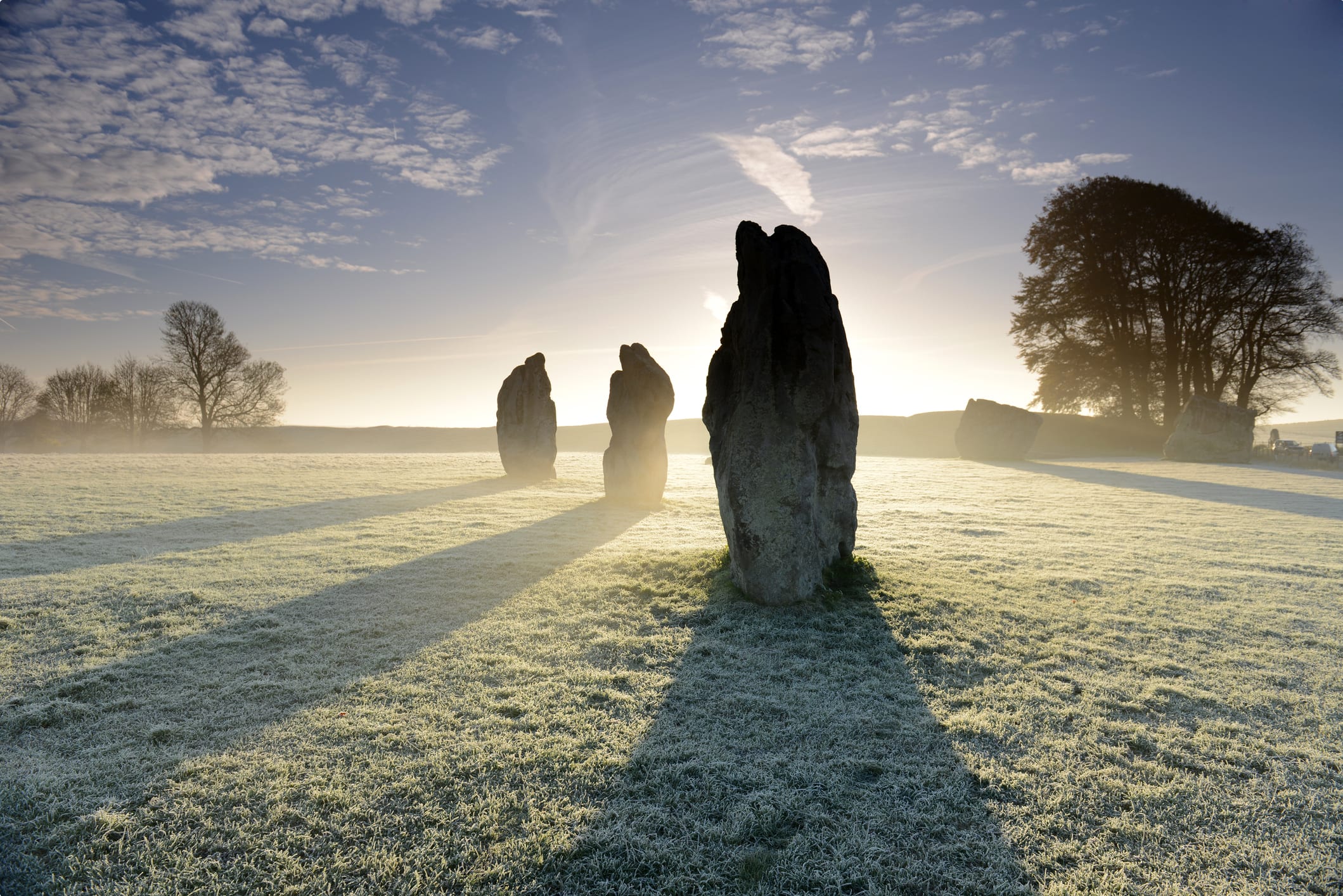
Purpose of Standing Stones
Amongst many others, one idea suggested that building stone structures as a cultural behaviour came from the Near East and spread west along coastal routes, perhaps initiated by a religious class. Later theories indicated building techniques might have developed independently in different regions, leaving us wondering how the structures appeared to be so similar. But a scientist who analysed 2,410 radiocarbon dates of megaliths and their surroundings reported in 2019 that the first such tombs appeared in France, about 6,500 years ago, and then spread along the Atlantic and Mediterranean coasts, as well as to England, Ireland and Scandinavia. Other parts of the world where prehistoric standing stones can be found;
- are north of Istanbul on the Black Sea coast of Turkey,
- Bulgaria,
- Algeria
- and many other places in Africa,
- in America around the Gulf of Mexico,
- on the Polynesian Islands
- and throughout Asia,
- India
- and South America.
Megalithic Structures & Monuments
The most common megalith structure found in Europe is generally called a dolmen. A chamber formed of stones standing upright and one or more capstones laid flat across the standing stones – creating a wall and roof shape. Sometimes the dolmens were covered with a mound or cairn (a stack of stones), but many of these coverings have disappeared over the centuries. Other chambers had a corbelled roof, and the layers of flat stones arranged in a fault shape replaced the larger capstones. Dolmens standing tall all over the world have been given many local names and can be found from the heel of Italy to the northwest of Ireland, from the south of Spain and Portugal to Denmark and southern Sweden. Human remains found in some, and none in others proposed one theory and debunked another, but often structures are referred to as burial chamber(s) or burial mound(s) for that reason. Another type of megalithic monument that appears in Europe is the single standing stone.
The Menhir
This occurrence is often called a menhir, large in size and not part of a group. Some menhirs are carved and shaped and have been identified as possible astronomical measures or markers. The most famous and most significant gathering of this type of megalithic standing stones in the world is located in Carnac Britanny, France. There are about 3000 prehistoric standing stones and menhirs, and the Carnac alignment extends over almost 6 km. These types of megaliths are the most enigmatic and simplest at the same time. And once again, these simple rocks seized the public’s imagination as only the sphere of mystery can.
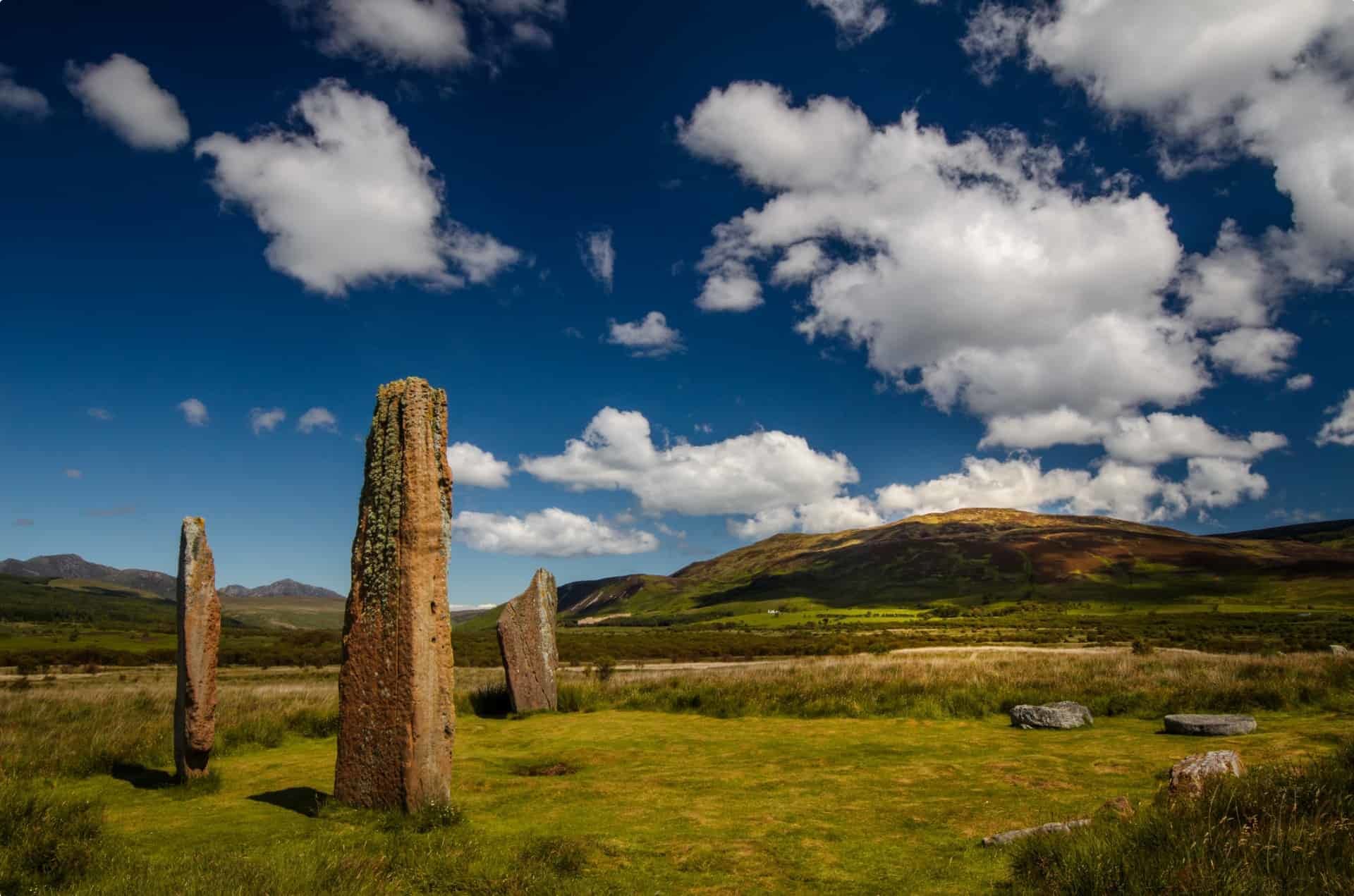
Alignments, long lines of standing stones, can be found from Denmark’s coast to Corsica – some of which are close together, and others stretch for long distances across the countryside and beyond modern-day borders. The standing stones have clearly demonstrated astronomical uses as well as ritual purposes. Circles or rings of standing stones can be found everywhere across the United Kingdom and the British Isles, and every one of these adds to the mysterious occurrence of these enormous stones. In some regions, for example, in Cornwall, both circles and alignments can be seen in close proximity. The circles are scattered in small numbers throughout Denmark, Belgium, France, the Czech Republic, Slovakia, Portugal, Sardinia and Menorca in their local forms. There are written historical documents stating that there might have been stone circles in countries such as Italy or Switzerland, but no evidence of those has been found.
Sacred Enclosures
Other megalithic monuments have been broadly grouped as sacred enclosures of sorts. Most of these form a quadrilateral shape, hundreds of feet long and rows of standing stones lining the perimeter of these earth platforms. Some have burial mounds or burial chambers; others have no other forms of attached structure, but menhirs stand close by. These stone-circled displays seem closely related to the long barrows in Great Britain, and many localised forms stand in Britain, Denmark, Germany, Holland, France, Corsica, Sardinia and the Balearics. The megalithic temples of Malta play a significant role in this mysterious chapter of our planet and are famous for their lobed spaces and ancient architecture.
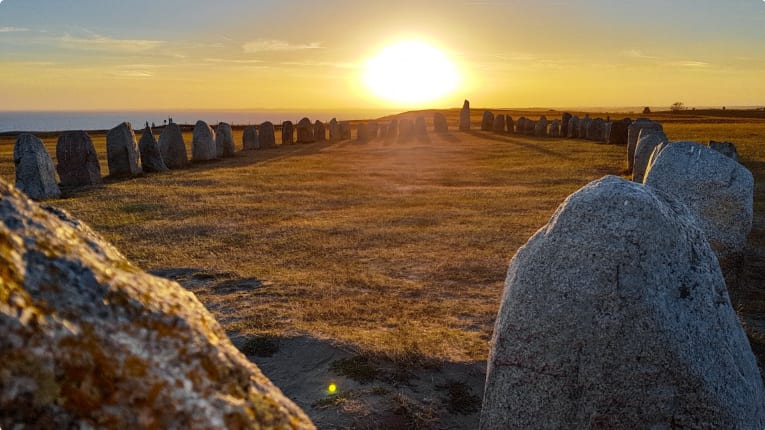
The earthworks that often come with megalith structure(s) look almost natural but are artificial – some of impressive size, which would have needed considerable resources to build. The cyclopean masonry was developed in Malta in 3500 BC and then with no apparent connection 2000 years later in Sardinia. This is just one example of the standing stones’ mysterious and puzzling world. Many kinds of megalithic works in their own historic environment and local variations have fascinated archaeologists and historians for centuries.
The Development of Megalithic Design
In most European countries, megalithic building began a few centuries after the introduction of farming, and this period is considered European prehistory. It is thought that the period of settled farming started in the middle east as early as 7000 BC.
Cultivation of forest-cleared land probably began in 5500 BC in the south of France, and the first megaliths appeared in that area around 4000 BC. The earliest structures built in megalithic Europe were in Brittany and Portugal before 4500 BC, and Malta’s great temples were the first considerable monuments built of the megalithic kind. The weather – the last Ice Age ending – played a role in the occurrence of megalithic structures. The moist, fertile environment of southern Europe seems to have been in conjunction with the phenomenon of megaliths and related objects.
During the Neolithic and Bronze Ages in north-western Europe, the climate was warm and mostly dry, allowing for ground cultivation, extended farming, clearances that left the horizon open and ready to be observed, and sailing activities went further than ever before. That meant trading many goods, including artifacts and exchanging ideas to near and far were possible. One particular folk that potentially coincided with the last Neolithic monuments and the beginning of a new era of megalithic building were the Beaker people, a new population of ancient central Europe and famous for their pottery found all over Europe dating from 2500 BC onwards. The Beaker people were known for their knowledge of the sun, moon and stars, establishing them as ruler-priests. The arrival of the Beaker also brought on a change in burial customs, and the Bronze Age is known for being far less calm than its predecessor, the Neolithic age.
Stonehenge at Salisbury Plain and the third stage of the monument was the last large circle constructed in 2000 BC. After this period of epic megalithic structures, the circle builders of the British Isles concentrated on quantity rather than size and today, approximately 900 small stone circles are known to us.

The religious needs of a growing population or indicating more specialised and advanced astronomical observation techniques, many reasons could have contributed to the spread of circles of the smaller kind but certainly not less important. The period before 1500 BC was a busy one with dolmens and mounds being built, rock tombs being cut, alignments and menhirs being erected to hover tall over the landscapes of the Bronze Age. Climate change brought on colder weather, and the conditions for megalithic builders and their astronomers became difficult compared to the mild climate of the previous period. Clouds made it impossible to continue celestial observations, and the high country and farming ground was invaded by peat moss that thrived in the new, damp conditions. The farmers left the once fertile land and moved to lower land. The circles and alignments must have been abandoned around this time, and no new ones were built after 1500 BC in northern Europe. The Mediterranean island of Menorca was the only place that continued to build long after the rest of western Europe had moved into another age. The Sardana from Sardinia produced giant tombs beyond 1500 BC, and the megalithic era in this region only ended with the Roman conquest in 23 BC.
It is strongly suggested that many megalithic builders were sailors and navigators. They arrived and spread to their new settlements in western Europe by the sea. The distribution of megalithic sites along rivers, coastlines, and islands supports this theory. Scientists could radiocarbon-date artefacts and rock paintings to confirm settlement periods, respectively. These artefacts also indicate the extent of contact various parts of Neolithic Europe had during the megalithic period, which was enabled by the calm seas of the Neolithic and early Bronze Ages. The knowledge of navigation and the movement of tides that the seafarers required to travel the waters provide another reason why standing stone structures were built – studying the stars, the sun and especially the moon.
Neolithic Rulers
The Neolithic settlement of Skara Brae is one of the best-preserved groups of prehistoric houses in Western Europe. Skara Brae is a stone-built settlement located on the Bay of Skaill on the west coast of the Mainland, the largest island in the Orkney archipelago of Scotland. A storm uncovered the houses in 1850, and these buildings provide a remarkable picture of the life on Neolithic Orkney 5,000 years ago – before Stonehenge was built. The houses made of stone are great rarities and extraordinary finds for archaeologists. The amazing artefacts discovered at this incredible site give an insight into what life was like in prehistoric Britain during the Stone Ages, and scientists speculate about the nature of the people who lived on the island. A unique cast of people that lived in megalithic communities – before the Beaker people arrived in Europe – has been identified that seemed to have been supported by the ordinary folk. Their status gave way to no manual labour, a special diet and luxurious housing for the time.
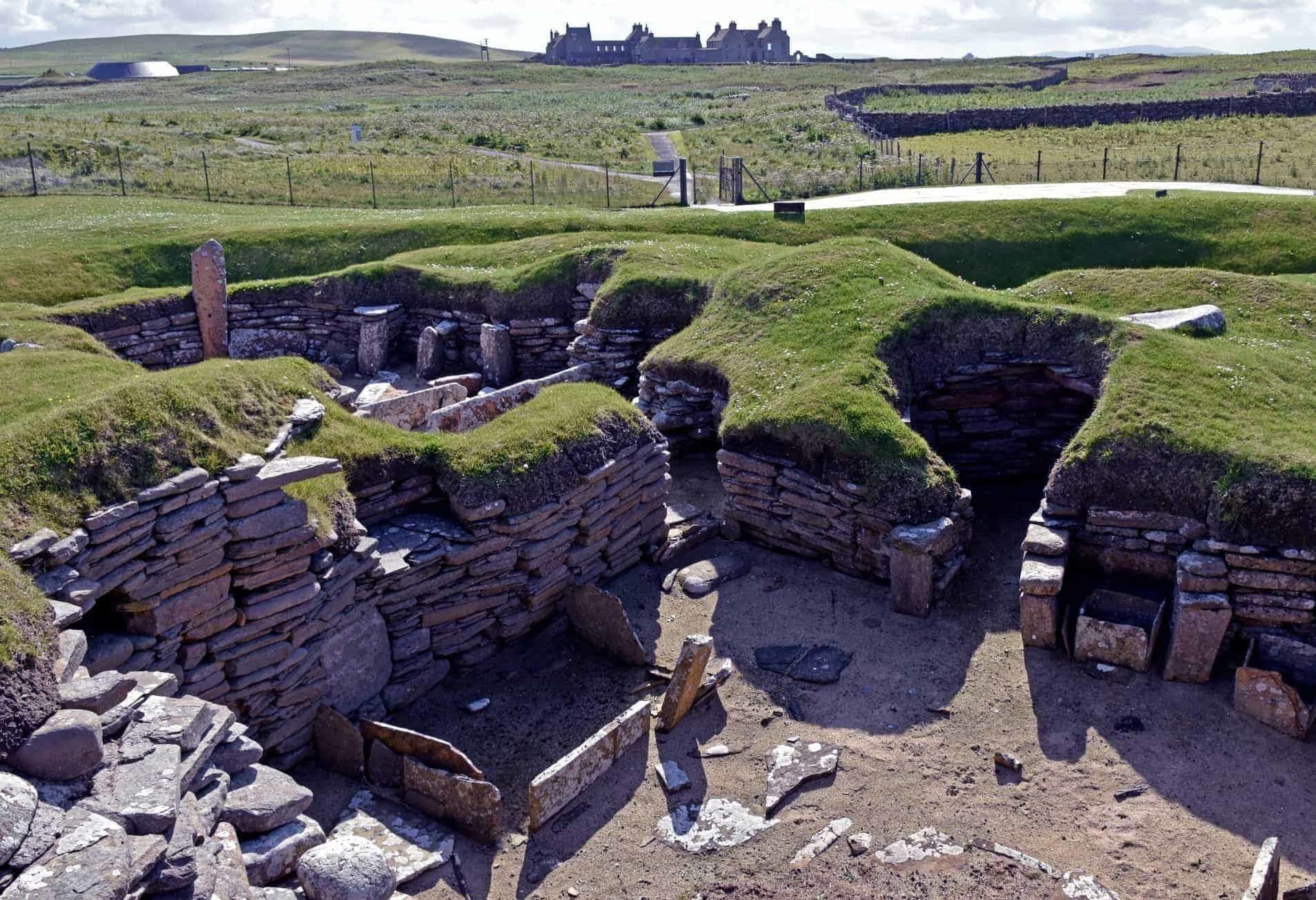
These findings led to the assumption that these special Neolithic people were either hereditary rulers, priests or scientists of the Neolithic kind. Another theory speaks about the gradual formation of larger chiefdoms by combining local family territories and replacing the chambered mound(s), chamber tombs and cairns as their central religious or cult monument with larger stone circles, close-set stone alignment(s) or other central monuments. Examples of these are the Isle of Arran in Scotland, dolmens east of Evora in Portugal, the temples of Malta and Wessex in England. Excavation and analysis of the Wessex monuments support this theory, and connections have been made with centres at Avebury (Avebury stone circle), Marden and Durrington Walls in Wiltshire, in Dorset and at Mount Pleasant near Dorchester and Knowlton.
Megaliths & Geometry
With more than 900 stone circles in the British Isles, research has found many common features amongst the monuments, including a standard unit of measurement – the megalithic yard, which is 2.72 feet in length. Not all sites fit into this measurement model, but the majority do. The megalithic yard is an astonishing feature that once more opens up additional questions about these fascinating structures.
Additionally, the megalithic yard fits the geometrical patterns that appear in many megalithic monuments’ structures. The ancient science of sacred geometry recognises these patterns considering the functioning of the macrocosm and microcosm. The main principles of this science have been noted in the description of Solomon’s Temple in the bible (relating to the dimensions of the Great Pyramid), in Pythagorean teachings on divine harmony of the soul and the attaining of pure knowledge through numbers (interconnected with Renaissance architecture) and in the masterworks of Islamic architecture (considering the majestic medieval cathedrals). The teachings of sacred geometry seem to be the secret of the masons that built these monuments of ancient human civilisation. Significant areas of central Germany show ancient sites running along straight lines hundreds of kilometres long, and these lines form geometrical shapes that display geometrical dimensions first published by Pythagoras. A peculiar straight line has been identified in England starting at St Michael’s Mount in Cornwall via Glastonbury and Avebury to Bury St Edmunds in Suffolk. Another line runs from north to south from the Arbor Low stone circle in Derbyshire to Avebury and Stonehenge, and other prominent geometrical figures have been placed over the south of England, connecting Wessex, the Midlands, Glastonbury Abbey and South Wales. Looking at maps showing these lines is an intriguing quest that raises many questions.
Understanding ley lines
These shapes and lines stipulate that megalithic Britain was built on leys. On a smaller scale, polygons and stars have been found in the geometry of stone rings, along with surprisingly precise knowledge of cardinal directions and symbolic proportions. The idea of ley lines connecting ancient circles, ancient stones and the land was developed in the early 20th century but might never be susceptible to proof under present scientific terms. Whether ancient societies deliberately erected the monuments along those lines or whether our knowledge of ancient geometry influences our modern-day interpretation, we might never know.
Megaliths and Their Landscapes
Another system of lines that was identified could be linked to the method of Geomancy: Most megalithic sites have a particular layout and geographic position in common, and the countryside falls into specific patterns around the structures. The classic megalithic site is on a level platform partially lower than a natural spur, and a valley like terrain lies below it. Almost always, there will be ridges of hills in the surrounding scenery that dominate the horizon, but these hills will only take up parts of the horizon, leaving a certain proportion of open space. The landscapes in which megaliths were built vary greatly, but the above characteristics can be seen on differing scales everywhere. The magnificent Knebel ringed dolmen in Denmark, Li Muri in Sardinia, Los Millares in Spain and Filitosa in Corsica are amongst the more dramatic examples of this layout. Other locations where it is equally evident are;
- the Callanish standing stones in Scotland,
- Forrières in Belgium,
- Ggantija in Malta,
- Stonehenge in England,
- Monte d’Accoddi in Sardinia and many other sites of importance.
Some sites, for example, Newgrange in Ireland, Kercado at Carnac and Hagar Qim in Malta, are placed at the very top of their hills, but the opposite is so common that it hardly could be a coincidence. The forgotten art of Geomancy or geomatic science seems to have a deep-rooted origin in China. Geomancy has been used in China for centuries to determine the best sites for tombs, temples and houses and incorporates the Chinese concept of Chi.
There are clear indications that this approach selects the same kind of positions in a landscape as those chosen for so many megalithic structures by Neolithic builders thousands of years ago. This concept supports the belief that there are naturally sacred places, and the lie of the land and a unique union of earth and sky make these places so magical. Studies have been conducted on the flow of electromagnetic currents and charge that is particularly strong in specific locations. In this case, they are thought to be noticeably stronger in standing stones and around the sites of megalithic monuments. The force of the energy appears to be particularly accessible at these sites, and the megaliths seem to mark this flow but also channel it.
Festivals & rites
One of the most interesting and intriguing facts about megalithic monuments is their specific orientation. The direction in which their entrances faced seemed to be of crucial importance. It was aimed at the winter solstice sunrise: The winter solstice is of significant consequence from a planetary level point of view. It signals the official beginning of the coldest season in the Northern Hemisphere. During the winter solstice, the sun appears to stand still at the southernmost point of the equator, also known as the Tropic of Capricorn.
Since prehistoric times, the winter solstice has been a key time of the year in many cultures and has been honoured by festivals and rituals worldwide. It marked the symbolic death and rebirth of the sun, and the gradual waning of daylight hours is reversed and begins to grow again. The solstice was a distinct annual cycle phase for many cultures, even during Neolithic times. Astronomical events were often used to guide activities, such as the mating of animals, the sowing of crops, and monitoring winter food reserves. Many cultural mythologies and traditions are derived from this.
The great monument of Newgrange in Ireland and Stonehenge in Scotland are spectacular examples of these building features. The primary axes of both monuments appear to have been meticulously aligned on a sightline pointing to the winter solstice sunrise (Newgrange) and the winter solstice sunset (Stonehenge). At Stonehenge, the Great Trilithon was oriented outwards from the middle of the monument, meaning its smooth flat face was turned towards the midwinter sun. At Newgrange on midwinter day, the rising sun shines straight through the mound entrance, down a passage illuminating the spiral rock-carvings inside the chamber. A truly marvellous sight!
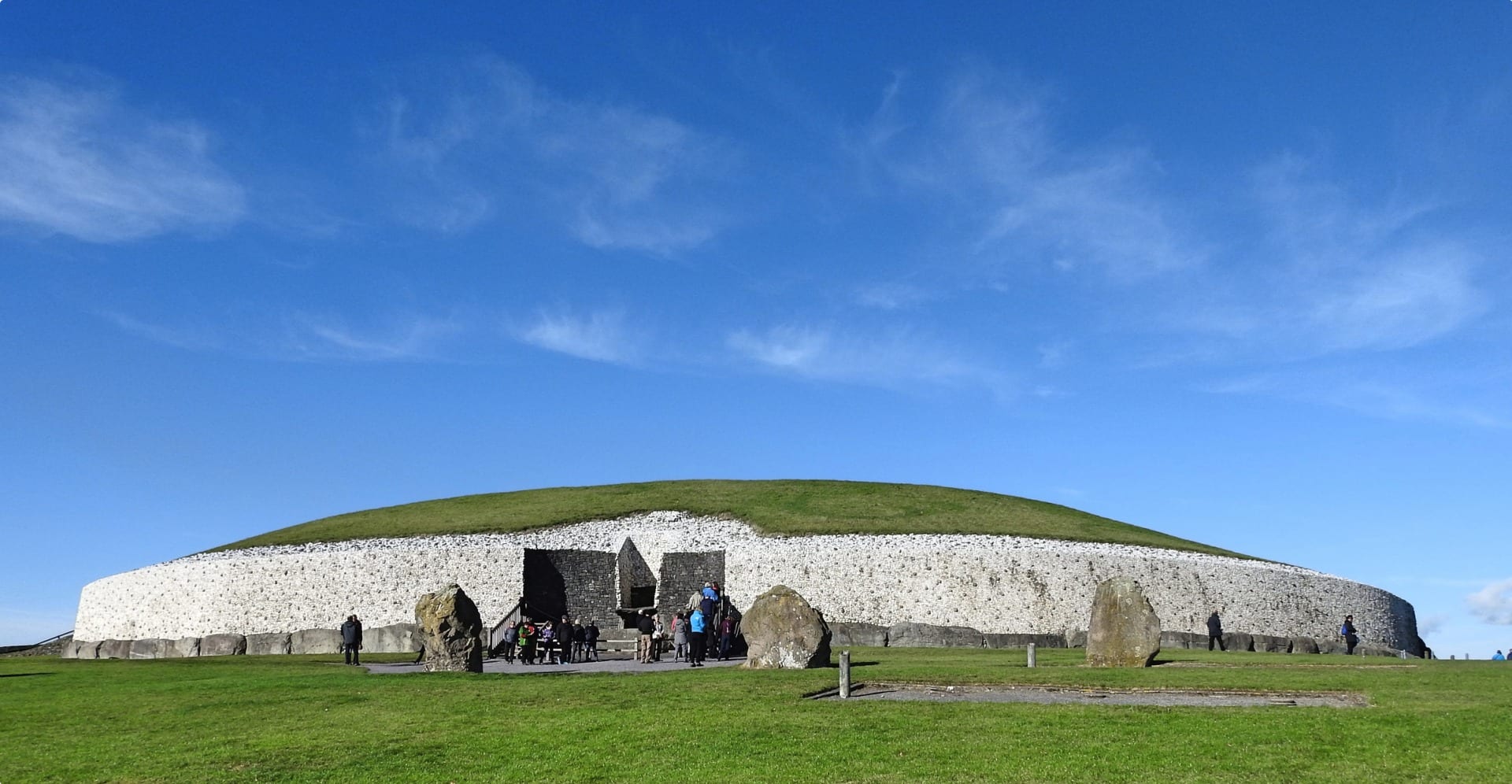
Later in history, the emphasis shifted from winter to summer. Stonehenge was rearranged in 2100 BC so that its primary axis lined up with the midsummer sunrise. At that point in time, the megalithic builders overall focus switched from the sun to the moon, and their possible chief objective was to predict and ritualise sun and moon eclipses. Nonetheless, the midsummer and midwinter solstice and the spring and autumn equinox formed natural divisions for each season of the year. The eclipses provided special occasions, all being celebrated with gatherings and ceremonies. The entrance passages of many mounds of the early kind built around 4500 BC faced the point on the horizon where the sun rises on of these special days. The first light of the sunrise would penetrate and illuminate the chamber within. The later built long-raised enclosures concentrated their orientation more often towards the equinoctial sunrise or midsummer sunrise. Marking a precise point in the annual cycle and synchronised rituals were of utmost importance to the people that built the monuments for these purposes.
Celtic Traditions
Celtic traditions, established after the last megaliths were built – around 1500 BC – likely found their roots in much older holy days and have been preserved in these new customs. Imbolc at the start of February, Beltane on May Day or eve, Lughnasadh at the beginning of August and Samhain end of October or the start of November were all Celtic traditions. In the same order, we recognise Candlemas, May Day, Harvest Festival and All Hallows’ Eve (or All Saints’ Day) in the Christian calendar. Samhain was the fire festival, and bonfires are still part of folk rituals nowadays in many parts of Europe.
There is no explicit evidence that these festivals are older than Celtic times, but large unexplained amounts of ash have been found at megalithic sites in various parts of Europe. These ashes weren’t from cremation rituals or domestic sites, so we must assume fires were lit regularly for purposes other than these. It might provide some peace of mind that only clues of animal sacrifices have been found at a few sites but no evidence of human sacrifices until today. Many cultures of the world celebrated and still celebrate rituals with possessions, dance, and fire today. Dance plays a pivotal role in the expression of life, and it sets in motion the human mind in its literal sense. Whether there were objects of veneration at these ceremonies, the crucial passages of the sun from one season to another was of concern or the forces that controlled the wellbeing of the earth and its potency was kept in harmony – megalithic sites were created to fulfil a higher objective than to simply exist.
Mankind and Megaliths; Creating Sanctuaries?
Many theories provide generic explanations for the megaliths in western Europe. Some say the great civilisation of Atlantis was part of the story. Others say the megaliths are evidence of the intervention of an extra-terrestrial intelligence – hello Aliens – in our ancestors’ life. Whatever we make of it, the monuments are evidence of a remarkable culture or cultures that shaped life on our planet between 5000 and 1500 BC. A culture that seemed freer of war or violence than the continent has ever been since until the coming of metal. Mankind was more concerned with the complex workings of the universe and farming, hunting and maintaining a balanced relationship with nature.
Megaliths appear to have an outer and inner level of significance – an outer and inner ring of existence and meaning. The outer level is connected with the wealth, fertility and prosperity of the land and its people.
The first farmers that settled in western Europe started to build megaliths with intentions that are lost to us, but from what we have learned, we can take a guess: ensuring the fertilisation and wellbeing of the earth by energies from the sun and moon and maintaining a steady flow of rebirth and death of all living beings. The megaliths were sanctuaries situated in unique places on our planet, and here, complex ceremonies celebrated humanity. These rites targeted a particular moment in the movement of the planets and seasons to bring together the forces of the sky and the earth in harmony with the human spirit, the land and all other life. Sometime after 3000 BC, the moon got involved. Its phases became as significant as the sun’s movements, expressed in the megalith’s designs. Over a thousand years, the Neolithic people built progressively complicated observatories for studying the moon and sun. Besides, for astronomy, these prehistoric monuments carried a high spiritual force for the people who stood among the large upright stones, burial mounds, and stone rows, anticipating amplifying that power for the land.
The inner level of the megaliths could be described as the level of meaning. It attends to the esoteric construct of transformation and regeneration. An expansion of consciousness. A place where one can rediscover unity with oneself, a space for the existence of a universal source and an opening for healing. The standing stones and its many other structures provided a recall to the cyclical rhythms of life – for everyone for thousands of years. Making each person that stepped foot into the perimeters of these ancient standing stones the Axis Mundi, joining heaven and earth with light and darkness.
Modern-day science and developments
The basis of radiocarbon dating is simple: all living things absorb carbon from the atmosphere and food sources around them, including a certain amount of natural, radioactive carbon-14. When the plant or animal dies, they stop absorbing, but the radioactive carbon they’ve accumulated continues to decay. Radiocarbon dating is a method that provides objective age estimates for carbon-based materials that originated from living organisms. An age could be estimated by measuring the amount of carbon-14 present in the sample and comparing this against an internationally used reference standard.
Bettina Schulz Paulsson, a prehistoric archaeologist from the University of Gothenburg in Sweden, spent ten years of her professional life analysing languages and data testing. Her work provided both the origin and evidence for a coastal, maritime distribution of the megalithic building technology for the first time. It confirmed the theory suggesting that people of that period had boats and the skill to travel along the coasts and quickly spread the megalithic method. Dr Schulz Paulsson found that the oldest megalithic grave(s) dated from about 4800 to 4000 BC in northwestern France and other areas like the Channel Islands, Corsica and Sardinia.
But northwest France is the only one of these areas that showed evidence of earthen grave monuments that preceded the first megaliths, dating back to around 5000 BC. In the geological area known as the Paris basin, these graves indicate the beginnings of monument building lacking in the other locations. Her findings also match the most recent genetic evidence, and it has been established that ancient DNA results show people in Ireland and England came from the Iberian Peninsula. These findings further connect the theory that megalithic designs were developed and widespread to different regions and countries by the very people who built the monuments. And most likely much earlier than we have thought until now.
Travel in the footsteps of Neolithic Standing Stones Europe
The Stonehenge circle of standing stones is perhaps the world’s most famous prehistoric monument and neolithic Britain‘s most significant national icon. This incredible monument of a long-forgotten past, the nearby burial grounds, and archaeological site located on Salisbury Plain, Stonehenge has come to symbolise mystery, strength and endurance. Stonehenge and Avebury, in Wiltshire, are among the most famous groups of megaliths in the world and these holy places and the nearby Neolithic sites are an incomparable testimony to prehistoric times. So, it doesn’t come as a surprise that Stonehenge, Avebury and their associated sites belong to the UNESCO World Heritage Sites (WHS). In fact, many other megalithic monuments worldwide have been recognised as UNESCO world heritage site(s) and are worth the visit.

Whether you wander to Penrith in Cumbria (historically in Cumberland), Northwest England, to marvel at the Long Meg and her daughters, a Bronze Age stone circle consisting of 59 stones.
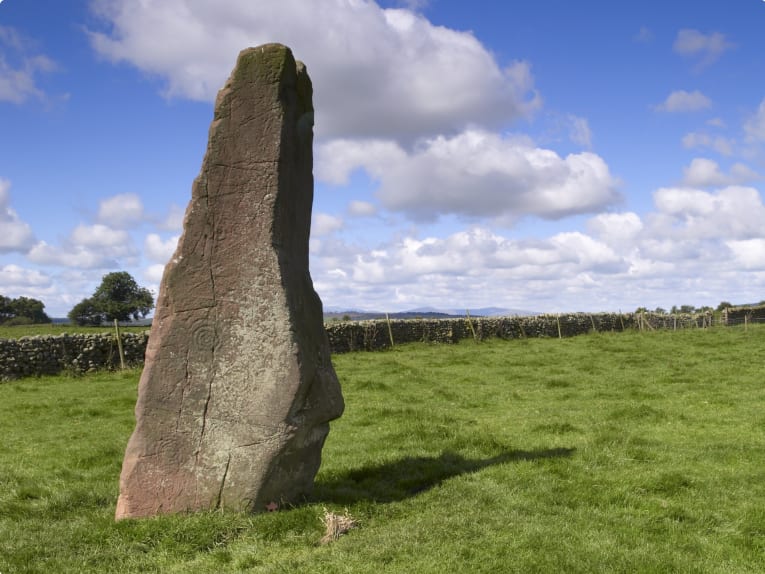
Or stop by the West Kennet long barrow. The barrow is one of Britain’s largest, most impressive, and most accessible Neolithic chambered tombs and is part of the Avebury World Heritage Site.
The next destination could be heading towards southern Brittany across the channel to see the Carnac standing stones, the famous great menhir, and the Le Ménec alignment. The standing stones Carnac are considered the greatest centre of megaliths globally. There are many other fantastic megalithic sites to visit in France, such as Argenteuil, Bagneux, Barnenez or Dol. In Great Britain, we have Anglesey, Arran, Bodmin Moor or the Devil’s Arrows. Add the British Islands and Orkney to the list before travelling to Malta because the impressive neolithic temples of Malta are a must-visit for anyone interested in the secrets of megalithic cultures and those of the mysterious stones.
Odyssey started in 1983 as a collaboration between the Universities of Australia and New Zealand in the continuing adult education market, so it is almost 40 years old. The company has been stewarding fellow travellers on an ever-expanding collection of diverse and curious small group tours. Tours are supported by a great group of leaders who are typically retired academics and schoolteachers with a passion for continuing to be curious and sharing knowledge with you.
Small is Beautiful – Economics as if People Mattered is a collection of essays by E F Schumacher published in 1973. He sets out the case for the community, not corporations, as the model for economic success. It influences us in all we do. For Odyssey Travellers, the term “small is beautiful” captures the essence of the experience offered. We endeavour:
- to provide touring programs that stimulate the mind, ideally changing perspectives and perceptions through travel and shared knowledge,
- to offer small groups for like-minded people to explore,
- to foster a collegiate, open touring platform encouraging friendships to be made and journeys shared,
- to tread softly in the places we visit and not overwhelm the art galleries, museums, environment, or accommodation we use.
As a small team, we are orientated to learning about you, the traveller, ensuring you are treated the way you wish to be treated, following the adage “treating others how you wish to be treated yourself”. When you travel with us, you may be part of a small group, typically 8-14 people, and be part of a small business group that averages some 40 people per week travelling with us all around the world. Our scale of operation and tours anywhere in the world are orientated for the selective few, not the many.
By travelling with us, you assist us in supporting, each year, at least one academically bright University student who might be struggling financially to continue their studies, with a scholarship to underpin those studies
Related Articles
Read and learn more
Related Tours
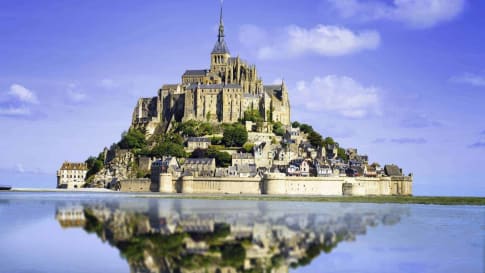
22 days
Aug, May, Apr, SepNormandy and Brittany escorted history tours for small mature grups
Visiting France
This small group tour for couples and solo travellers is centred on the North West corner of France: Normandy, where the peaceful landscape belies a turbulent past; Brittany, where a strongly separate Celtic culture is still evident; Poitou, famous for its rich farmlands and historic ports; and the Loire Valley, replete with royal châteaux.
From A$15,895 AUD
View Tour
20 days
Aug, MayTour of Denmark's Culture & History
Visiting Denmark
Experience group travel for couples and single travellers to Denmark. This European tour provides a travel experience based around key destinations and itineraries that provide authentic experiences in Denmark .A single supplement applies for solo travellers.
From A$15,895 AUD
View Tour
From A$15,995 AUD
View Tour
11 days
Sep, Apr, AugShort Spain Tour for senior and mature travellers
Visiting Spain
Join our small group guided tour of Spain, exploring this fascinating country over 10 nights with like minded people. We start in Barcelona and make our way slowly towards Madrid. Enjoy the food and culture while learning about the history of each location from our expert local guides and Odyssey Program Leader.
From A$7,610 AUD
View Tour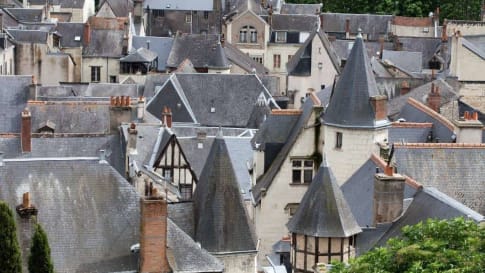
18 days
Jun, SepLoire Valley Walking Tours | Small Group Tours of France
Visiting France
The Loire Valley is the largest of all the UNESCO World Heritage sites. This small group walking tour daily itineraries cross a multitude of historic towns and villages providing authentic experiences for couples and single travellers to enjoy. A small single supplement applies to solo travelers.
From A$13,365 AUD
View Tour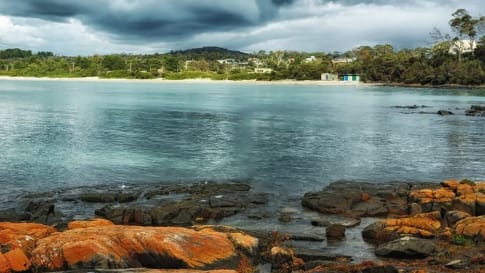
days
JanTasmanian Wilderness | Summer School in Hobart, Tasmania
Visiting Tasmania
The Tasmania Wilderness summer school is held annually in Hobart in early January. This summer school allows you to experience the great western wilderness of Tasmania, while staying at a comfortable ‘base camp’ in a Hobart hotel!
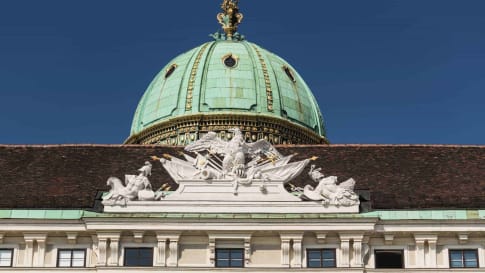
22 days
AugHabsburg Art and Classical Music small group Tour
Visiting Austria, Czech Republic
From the mediaeval jewel of Cesky Krumlow to the grandeur of the Habsburg’s summer palace in Vienna, our small group will embark on a 21 night journey to learn about these vibrant and artistically rich cities. We delve into the history of the famous artists, musicians, writers, architects and composers from Austria, Hungary, Poland and the Czech Republic.
From A$15,245 AUD
View Tour
24 days
Sep, AprLa Belle France small group escorted history tours for seniors
Visiting France
Travelling with like minded people on this small group we visit several culturally significant and picturesque regions of France, including Provence, Champagne, Burgundy, and Bordeaux regions, where we sample wine and learn more about the tradition of wine-making. We also visit the Loire Valley to see its many castles. Finally, we travel to Bayeux, from where we we visit Mont St Michel and spend time up on the Normandy landing beaches with local guides.
From A$19,965 AUD
View Tour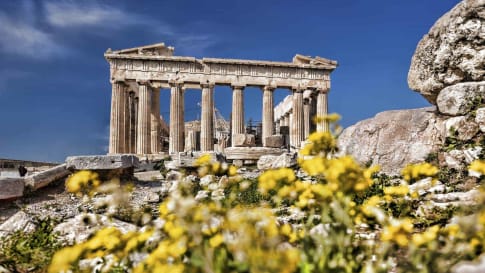
22 days
Apr, Sep, MayGreece small group escorted history tour
Visiting Greece
Our 22 day small group tour explores the land of great philosophers, myths, and legends. We will learn about the culture and heritage of modern Greece whilst exploring and learning Athens, which only found independence in its uprising from the Ottoman Empire in the 19th century.
From A$14,145 AUD
View Tour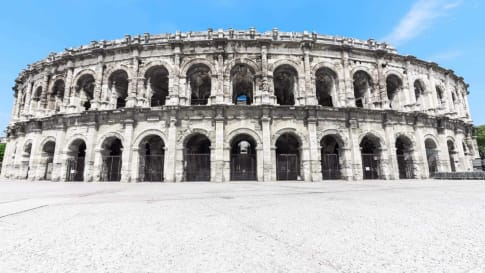
20 days
AugRomans in France small group specialist history tours for seniors
Visiting France, Switzerland
Join our small group tour to explore what remains of the Roman Gaul. France, Belgium, Luxembourg and South-west Germany were occupied by Roman Gaul some 2,000 years ago. To this region the Romans brought roads, bridges, education, cities and, perhaps, above all the Peace of Rome.
From A$16,995 AUD
View Tour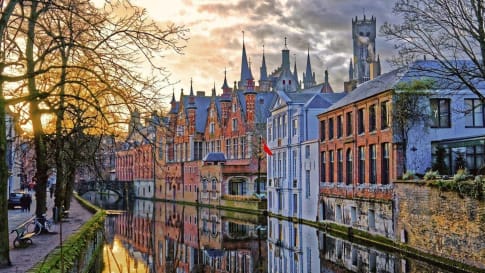
21 days
SepBelgium, Netherlands, France, Germany Art Tour | Western Europe Art Tour
Visiting Belgium, France
Most of us have already experienced the grandeur of classic galleries such as the Louvre and the National Gallery. Travel with like-minded people in a small group tour and be surprised by the lesser-known but equally wonderful smaller art galleries across Northwest Europe.
From A$15,895 AUD
View Tour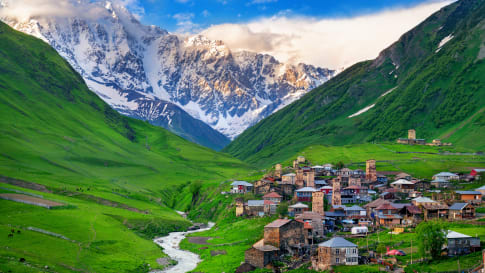
22 days
May, OctSmall Group Tour to the Caucasus | Armenia Azerbaijan Georgia
Visiting Armenia, Azerbaijan
This small group program is designed to give people an opportunity to explore Tbilisi, Baku, Yerevan as well as important monuments, historical and religious sites, diverse landscapes and ancient architecture by visiting the Caucasus Mountains and the lowlands of Armenia, Georgia and Azerbaijan. Led by local English speaking guides, there will be the opportunity to meet local people.
From A$11,835 AUD
View TourRelated Articles
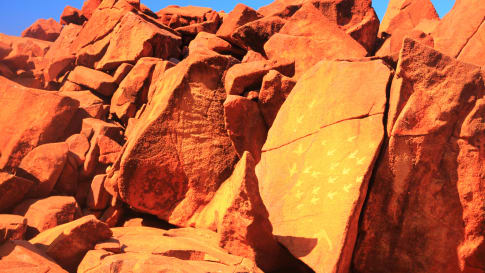
Aboriginal Stone Arrangements
Aboriginal stone arrangements are a form of rock art deliberately placed in position by Indigenous Australians and associated with spiritual ceremonies or utilitarian purposes. This article for mature and senior travellers provides and couples and solo travellers with and understanding and appreciation of the Ancient historic landscapes they are travelling though on a small group tour.
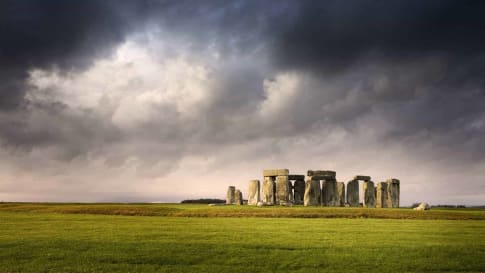
Bronze Age Beaker People of Stonehenge
Learn about the Beaker people and Stonehenge before a small group educational tour for senior couples and mature solo travellers. Explore prehistoric, neolithic Britain including Avebury and Orkney's Skara Brae.

Discovering Medieval Chester: A Thriving Trade Centre
Article about Chester, England for small group educational tours for senior couple and mature solo travellers to England. Articles to support your travel plans to explore England, Scotland, Wales and Ireland.

Exploring Britain's Prehistoric Past: The Definitive Guide for Travellers
Article on Britain's neolithic past for small group educational tours for senior couples and mature solo travellers interested in learning about Standing stones, burial chambers, Skara Brae and Stonehenge or Beaker people.

Highlights of Stonehenge and Avebury
Explore Neolithic Britain including Stonehenge, the stone circles of Scotland for example and Skara Brae. Material to support escorted small group tours for senior couples and mature solo travellers to Britain and Europe.

Lumps and Bumps: How to Read the British Landscape
The British landscape has been worked and re-worked. It is secrets of this palimpsest landscape is revealed through drainage patterns and prehistoric features all the way through to the modern day. These small group tours for mature and senior travellers examine the landscape from the Neolithic, to Roman, through the seven ages of Britain in walking tours and history tours of Britain.
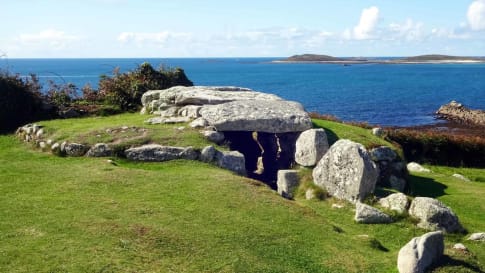
Neolithic Burial Chambers: Telescopes to the Stars
Neolithic Burial Chambers and the stars The calendar you have in your smartphone was once written in the stars. During the Neolithic or final period of the Stone Age, skies were used to mark time;…

New Discoveries about Britain's Stone Circles
Article about recent discoveries on stone circles in Neolithic Britain. Explore and learn on an educational small group tour for senior couples and mature single travellers to Scotland, Wales and England plus so much more including Australia.
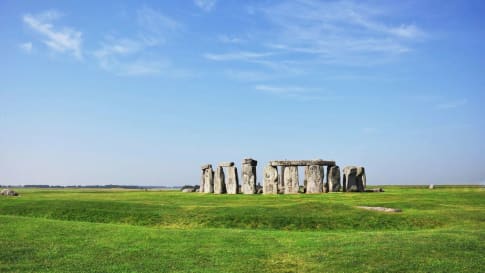
Standing Stones in Prehistoric Britain
Standing Stones in Prehistoric Britain Stonehenge, England, United Kingdom The standing stones of Great Britain continue to be the subject of research and archaeological hypothesis. Britain is not the only location where standing stones are…
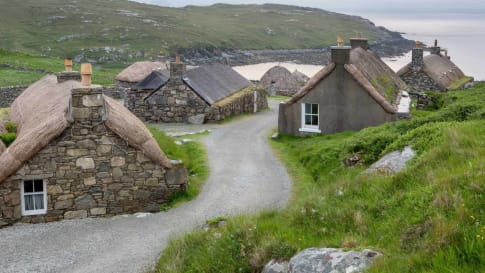
Islands of the Outer Hebrides: The Definitive Guide for Travellers
Scotland's Outer Hebrides are discussed in this article to assist the mature solo and couple in planning to visit Scotland and the British isles on a small group tour.
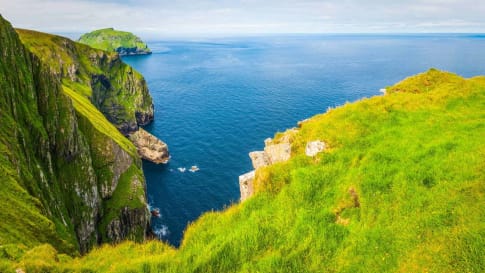
Questions about the Outer Hebrides, Scotland for senior travellers.
Explore and learn about on a Seniors small group tour of the Orkney Islands and other Scottish islands. Learn about the pastoral, cultural and historic settlement of the islands including Skara brae.
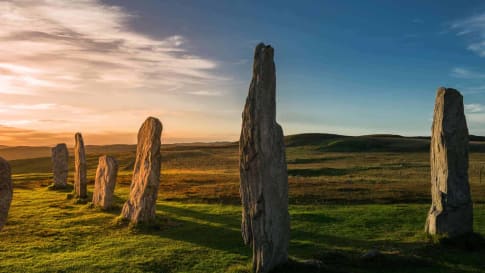
Shetland Islands Discovered: The Definitive Guide for Travellers
Article for senior and mature travellers, couples or solo travelers, interested in visiting the Shetland isles of Scotland. Explore on a small group tour to learn about the Bronze age, standing stones, peat and whisky and more when visiting the Scottish isles.
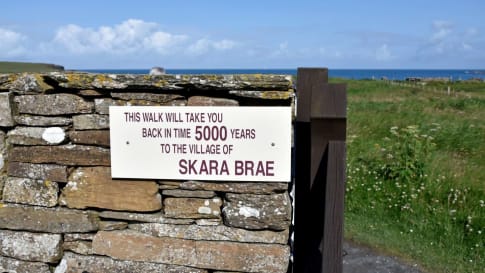
Skara Brae, Scotland
Article introducing Neolithic Britain and the trading routes to Iceland, the Faroe Islands and the Irish sea. Skara brae is included on the Scottish isles tour and the Prehistoric Britain program. Small group tours for senior couples and mature solo travelers.
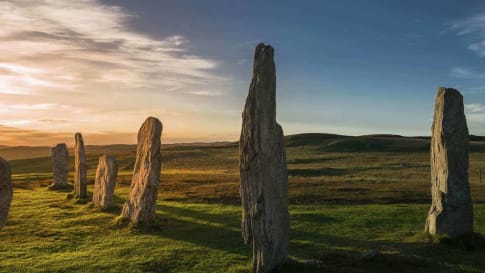
Visiting Scotland: Standing stones, neolithic history and whisky
Scotland draws travellers. Learn about Scotland its Islands, Skara Brae, Edinburgh, Glasgow and places in between such as Perth, Oban and Thurso and join a small group tour of Scotland for mature solo travellers and couples.





